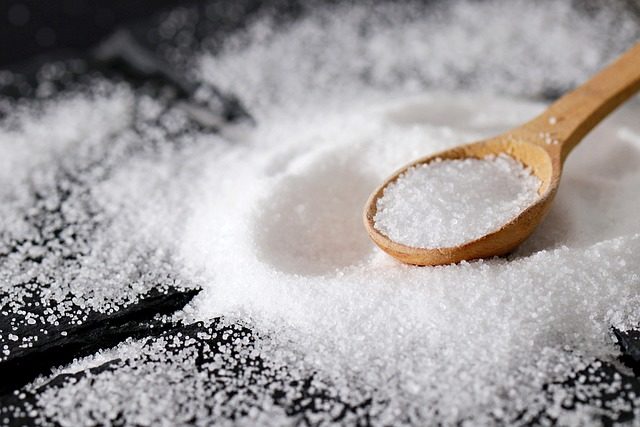Saline solution, a simple mixture of salt and water, is a remarkably versatile and cost-effective tool that can be easily created at home. From medical applications to fun DIY projects, this humble solution has a wide range of uses that might surprise you. In this blog post, we will explore the benefits and applications of saline solution, teach you how to make isotonic and hypertonic variations, and even share a fun recipe for kids.
By the end of this blog post, not only will you be well-equipped to create your own saline solution for various purposes, but you will also gain a newfound appreciation for this seemingly simple yet incredibly useful liquid.
Table of Contents
Key Takeaways
Creating homemade saline solution is an easy and affordable way to make isotonic or hypertonic solutions with various applications.
Saline can be used for a variety of purposes, including nasal irrigation, wound care, eye drops/contact lens cleaning and DIY slime for kids.
Adhere to safety protocols when using saline solution in any application to ensure cleanliness and safety.
Creating Homemade Saline Solution

Creating a saline solution at home is simple and cost-effective, with options for isotonic or hypertonic solutions depending on the intended use. Combine salt with water to create a gentle normal saline solution, and safe for a variety of applications, such as cleaning wounds, rinsing nasal passages, and even caring for contact lenses.
Isotonic saline, which closely mimics the body’s natural sodium chloride concentration, is ideal for most applications. In contrast, hypertonic saline has a higher salt concentration and can be used for more stubborn nasal congestion or wound care.
The specifics of making both isotonic and hypertonic saline solutions will be explored further.
Isotonic Saline
Isotonic saline is a balanced solution that closely matches the body’s natural salt concentration, making it ideal for most applications, including intravenous solutions. It is commonly used for various medical purposes, such as intravenous fluid administration, wound irrigation, and even bladder irrigation. Preparing isotonic saline is as simple as combining one teaspoon of salt with one liter of distilled water and stirring until the salt is fully dissolved.
The advantages of isotonic saline include:
Its close resemblance to the body’s natural salt concentration
Its suitability for a wide range of applications
Its simplicity in preparation
Its effectiveness and safety for various medical purposes
By utilizing isotonic saline and storing it in an airtight container, you can ensure that your homemade saline solution is both effective and safe.
Hypertonic Saline
Hypertonic saline has a higher salt concentration than isotonic saline, making it a strong sterile solution used in medical treatments requiring rapid infusion of fluids, and treating hyponatremia. It can also be employed as a nebulized medication for individuals with cystic fibrosis or bronchiolitis, as it helps to break down mucus by releasing trapped carbon dioxide.
Adherence to instructions is crucial when utilizing hypertonic saline. Here are some important guidelines to follow:
The saline should be provided by a healthcare professional.
Be aware of any potential adverse effects and consult with your healthcare provider if you experience any.
Use sterile solutions when preparing and administering the saline.
Avoid contact with the eyes.
Hypertonic saline offers an alternative for more stubborn cases, where a higher concentration of salt is needed for effective treatment.
Nasal Irrigation with Saline Solution
Nasal irrigation with saline solution can provide relief from congestion and allergies by flushing out irritants and mucus. This simple yet effective practice can help clear away allergens, mucus, and other debris, providing relief from a blocked nose and helping to avert sinus infections. Additionally, saline solution is gentle on the nasal lining, making it a safe and effective option for nasal irrigation.
There are several methods for nasal irrigation with saline solution, including the popular neti pot method and alternative household items like bulb syringes or saline rinse bottles. Each method will be discussed in the subsequent sections, along with instructions for safe and effective nasal irrigation.
Neti Pot Method
The neti pot method is a popular and effective way to perform nasal irrigation using a saline solution. A small container with a spout, the neti pot is designed to rinse the nasal passages comfortably and efficiently. To prepare a saline solution for a neti pot, combine 1/4 teaspoon of non-iodized salt with 8 ounces of warm distilled or sterilized water.
To use a neti pot, follow these steps:
Tilt your head to the side over a sink.
Insert the spout of the neti pot into the upper nostril.
Gently pour the saline solution into the left nostril and allow it to flow out of the lower nostril.
Repeat the process on the other side.
Using a neti pot can assist in clearing the nasal passages, decreasing congestion, and flushing out allergens and irritants, leading to improved sinus health.
Alternative Household Items
If a neti pot is not available, alternative household items like a bulb syringe or squeeze bottle can be used for nasal irrigation. These alternatives can also help clear nasal passages, reduce congestion, and flush out allergens and irritants, providing relief from sinus symptoms.
To use an alternative household item for nasal irrigation, follow these steps:
Ensure that the item is clean and sterile.
Fill it with the saline solution.
Gently squeeze or squirt the solution into one nostril while tilting your head over a sink.
Allow the solution to flow out of the other nostril.
Repeat the process on the opposite side.
Even without a neti pot, the benefits of nasal irrigation can be achieved with alternative methods.
Caring for Piercings and Wounds with Saline Solution
Saline solution is beneficial for piercing aftercare and wound cleaning, promoting healing and preventing infection. Utilizing saline solution for piercings and wounds offers several advantages, including:
Natural cleansing properties
Preventing infections
Reducing pain and discomfort
Reducing swelling
Being a safe and gentle option for cleaning
To apply saline solution on piercings and wounds, follow these steps:
Clean the area with soap and water.
Saturate a cotton swab in the saline solution.
Gently dab the area with the saturated cotton swab.
Allow the saline solution to remain on the area for a few minutes.
Rinse the area with clean water.
The specific applications of saline solution for piercing aftercare and wound cleaning will be discussed in the subsequent sections.
Piercing Aftercare
For new piercings, soaking in warm saline solution once or twice daily can help keep the area clean and reduce the risk of infection. The saline solution can facilitate healing and discourage infection by removing dead cells and other debris.
To soak a new piercing in warm saline solution, follow these steps:
Prepare a solution that is approximately the temperature of hot coffee.
Immerse the pierced area in the solution for about 5 minutes, once or twice daily.
After soaking, rinse the piercing with clean water to ensure that the area remains clean and free of irritants.
Cleaning Wounds
Saline solution can be used to clean wounds, but using running tap water is also an effective method for wound care. Cleaning wounds involves utilizing a mild soap and water or saline solution to carefully clean the area surrounding the wound while avoiding introducing soap or antiseptic directly into the wound.
Utilizing saline solution to cleanse wounds is a mild and efficient method, as it aids in the removal of dirt and debris without irritating the wound. Additionally, it helps to lessen the risk of infection.
However, tap water is also an effective and safe option as an alternative to saline solution for cleaning wounds.
Learn more, visit Disinfecting a wound with saline solution.
Saline Solution for Eye Care
Homemade saline solution can be used for eye care, including eye drops and contact lens care. Utilizing saline solution for eye care has several advantages, such as flushing irritants, removing debris from contact lenses, and soothing dry eyes.
The subsequent sections will discuss the creation of homemade eye drops using saline solution and provide information on its use for contact lens care. Keep in mind that homemade saline solution should not be used as a disinfectant for contact lenses and should only be used for rinsing after cleaning and disinfecting with an appropriate care system.
Homemade Eye Drops
Creating your own eye drops with saline solution can provide relief from dry or irritated eyes. Formulate homemade eye drops by mixing natural ingredients such as saline solution, chamomile tea, or cornflower water. that cater to your specific needs.
To prepare homemade eye drops, mix the desired ingredients in a clean container and apply the solution to the eyes using an eyedropper. However, it is essential to acknowledge that homemade eye drops may not possess the same level of sterility and safety as commercially available eye drops. It is suggested to seek advice from a healthcare practitioner before utilizing homemade eye drops.
Contact Lens Care
Saline solution can be used to rinse and store contact lenses, ensuring they remain clean and comfortable to wear. To rinse contact lenses with saline solution, follow these steps:
Fill a clean contact lens case with the solution.
Place the contact lenses in the case.
Gently swirl them around for a few seconds.
Rinse the lenses with the solution.
Discard the solution.
For storing contact lenses with saline solution, follow these steps:
Fill a clean contact lens case with the solution.
Place the contact lenses in the case.
Close the lid.
Store the case in a cool, dry place.
Remember that saline solution should not be used as a disinfectant for contact lenses and should only be utilized for rinsing after cleaning and disinfecting with an appropriate care system.
Fun with Saline: DIY Slime for Kids
Making saline-based slime is a fun and therapeutic activity for kids, with a simple recipe and important safety tips to follow. This engaging sensory experience can be enjoyed by children of all ages, and the process of creating the slime provides an opportunity to learn about the fascinating properties of saline solution.
The subsequent sections will share a basic slime recipe using saline solution and provide safety tips for making and handling the slime. This enjoyable activity is perfect for a rainy day or as a hands-on learning experience that combines science and creativity.
Slime Recipe
A basic slime recipe using saline solution can provide a fun and engaging sensory experience for children. To create saline-based slime, you will require:
1/2 cup of white glue
1/2 cup of saline solution
1/2 teaspoon of baking soda
Food coloring (optional)
Mix the following ingredients together in a bowl:
Glue
Saline solution
Baking soda
Food coloring
Stir until the slime forms. This simple and entertaining activity can be enjoyed by kids of all ages, providing hours of fun and a unique way to explore the properties of saline solution.
Safety Tips
When making slime, it’s important to maintain cleanliness and be aware of potential contamination to ensure a safe and enjoyable experience. Be sure to wear gloves and safety glasses, as the ingredients may cause irritation to the skin and eyes. Keep the slime away from pets and small children, as it can pose a choking hazard.
Ensuring your fun with saline-based slime is both educational and secure can be achieved by following these safety tips. Enjoy the process of creating this engaging sensory activity while learning more about the fascinating properties of saline solution.
Summary
In this blog post, we have explored the numerous applications and benefits of saline solution, from medical uses such as nasal irrigation, wound care, and piercing aftercare to fun DIY projects like making slime for kids. We have also provided instructions on how to create isotonic and hypertonic saline solutions at home, as well as tips for using saline solution for eye care and contact lens cleaning.
We hope that this blog post has inspired you to try making saline solution at home and explore its many uses. The versatility and cost-effectiveness of saline solution make it an invaluable tool for a wide range of applications, providing both practical benefits and endless possibilities for fun and learning.
Frequently Asked Questions
What is saline solution used for?
Saline solution, containing 0.9% salt which closely resembles the concentration of salt found in our blood and tears, is used to clean wounds, clear out sinuses, treat dehydration, and care for eyes and contact lenses.
How do I make a saline solution?
To make a saline solution, mix 3 teaspoons of iodide-free salt with 1 teaspoon of baking soda and add it to 8 ounces of lukewarm distilled or boiled water. Additionally, you can pour 4 cups of warm water into a container and mix 2 teaspoons of table salt until dissolved. Label your container for future use.
Is saline just salt water?
Yes, saline is salt water that contains 0.9% salt and is similar in composition to tears and blood, making it useful as an irrigating solution.
What does saline solution do for piercings?
Saline solution is a safe and gentle way to keep piercings clean and avoid bacterial and other infections. It helps to remove debris, dirt, and dried blood around the piercing area, boost the body’s natural healing process, and also kill off bacteria with its salt content.
Is it safe to use homemade saline solution for intravenous purposes?
No, it is not safe to use homemade saline solution for intravenous purposes, as it may not be sterile and can cause medical complications.









